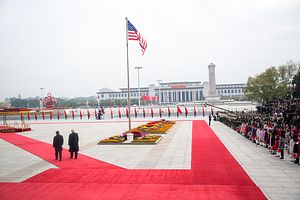The United States and China do not share a common view of the state of intellectual property protection in China. For its part, China believes that it has taken great strides, in a very short period of time, to stand up an IP regulatory regime that (imperfectly) protects both domestic and foreign IP. This regulatory regime already supports what has become a remarkably innovative domestic economy, one that produces the most intellectual property of any country in the world.
But it appears that the issue has become less “does China steal?” (which it most assuredly does) and more “what are the strategic consequences of allowing China to access the most innovative technologies in the global economy?” And this is not a problem that the Chinese government can resolve by updating and improving its IP regime. Consequently, it’s an open question whether such steps as a new law to prevent forced technology transfer will actually matter to the United States. One of the most serious complaints about China involves Beijing’s strategy of investing in U.S. technology startups, a technique that secures access to intellectual property while also preventing the United States (because of Department of Defense contracting rules) from acquiring that IP. This problem isn’t caused by lax Chinese IP protection; it’s caused by DoD contracting regulations.
The situation may be much simpler than the focus on IP suggests. An economic system constructed by one hegemon, with that hegemon’s interests in mind, cannot abide the emergence of another hegemon without radical changes. The transformation of the global economic system that facilitated the rise of the United States in the early 20th century to the mid-20th century system that facilitated U.S. dominance was overshadowed, to great extent, by the cataclysmic wars that convulsed Europe and Asia.
Comparison with the U.S. response to Soviet growth is also useful. The system of export controls that the United States established to manage the Soviet Union was not, primarily, about concerns over intellectual property appropriation. The Soviet IP system was more sophisticated and mainstream than is commonly understood, although given the peculiarities of the Soviet economic system it led to outcomes that were often simply weird. But the United States didn’t complain very much about Soviet IP abuses, even when they existed, both because the Soviets weren’t part of the global economy, and because IP protection was beside the point. Even if the USSR had been fully compliant with U.S. IP law, the United States would have excluded the Soviet Union from advanced technology for national security reasons. This is why the United States did not tolerate Soviet investment in its own high technology companies, and did not facilitate the education of vast waves of Soviet engineering students in its university system.
Of course, the situation today is different in important respects, not least because U.S. consumers have benefited enormously from trade with China, U.S. science has benefited from Chinese students, and so forth. But while Chinese IP violations have provided fodder as the United States has stepped up its trade war, they probably aren’t the Trump administration’s central concern. And this means that China can’t solve the problem by simply improving its compliance record.
The views expressed here are his personal views and do not necessarily reflect those of the Department of Defense, the U.S. Army, the Army War College, or any other department or agency of the U.S. government.

































